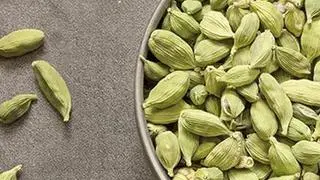The recent increase in tea prices may sustain in the medium-term on the back of expected gap between demand and supply in India and shortage of carry-forward stocks at the beginning of the 2010 season globally, according to study by rating agency ICRA. Tea produced in the Northern region may fetch a better price for its quality compared with southern states, it said.
However, the upside in prices would continue to be influenced by the tea growers' ability to maintain their export competitiveness, a critical component of the domestic demand-supply equation, the rating agency said.
The buoyancy in tea prices has led to a considerable improvement in the profitability and credit profiles of bulk tea players from the northern regions such as Assam valley, Cachar, Darjeeling, Dooars and Terai, given that almost two-third of their costs are rigid in nature.
In the first nine months of 2010, production of tea in North India suffered on account of adverse weather and pest attacks in tea gardens. Notwithstanding a sizeable increase in output during September, production for the nine months was down by about 10 million kg, with the shortfall encouraging tea prices to firm up further.
Consequently, the cumulative average price at North Indian auctions was up by over Rs 4 a kg by September 2010. Prices at the auction centres in South India, however, witnessed a significant decline in the first nine months of 2010, by almost Rs 15 a kg, on account of an increase in production. Although prices witnessed a sizeable decline of around 18 per cent y-o-y, it was still up by about six per cent over the corresponding period in 2008.
Exports
With exports accounting for more than a third of South India's production, and given that the average quality of tea produced in this region is inferior to that produced in Sri Lanka and Kenya, the increased supplies from these two countries affected South Indian tea prices, both in the export and domestic markets, ICRA said.
Although production in Kenya and Sri Lanka witnessed a significant increase of about 119 mkg (about 29 per cent), year-on-year, prices at the global auction centres remained buoyant on the back of the large opening shortage and continued growth in demand.
Given the favourable outlook for domestic tea prices, particularly for quality North Indian teas, ICRA expects the profits and cash accruals of the large established bulk tea players in northern region India to remain healthy.
The operating profitability of companies with plantation in the northern region witnessed a significant improvement in FY'10, turning the debt coverage indicators healthier. Regular accretions to reserves and use of cash accruals to repay part of the existing debt also led to improvements in the capital structure of the bulk tea companies. Besides, the large players have used their healthy cash accruals to part fund acquisitions of small- to medium-size tea gardens abroad or to diversify their businesses by pursuing other growth opportunities, ICRA said.







Comments
Comments have to be in English, and in full sentences. They cannot be abusive or personal. Please abide by our community guidelines for posting your comments.
We have migrated to a new commenting platform. If you are already a registered user of TheHindu Businessline and logged in, you may continue to engage with our articles. If you do not have an account please register and login to post comments. Users can access their older comments by logging into their accounts on Vuukle.